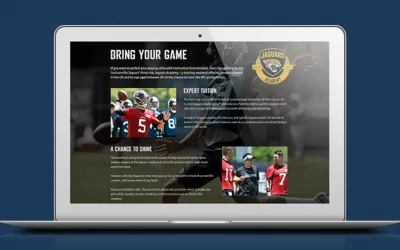One of the key talking points so far this World Cup has, unsurprisingly, been the introduction of Video Assistant Refereeing (VAR). Equally unsurprising, it’s sparked a fair degree of debate.In this article, we’ll examine the ways in which the introduction of VAR highlights the importance of the testing phase when implementing new technology into your organisation.
A bit of background
VAR isn’t making its football debut at the World Cup. It was used at the Confederations Cup in 2017, and to varying degrees in Germany, Italy, Australia, the USA and in England.
Its introduction to the World Cup was announced in March 2018, following unanimous approval from the International Football Association Board.
So, all trialled, tested and ready to be deployed into the biggest showcase event in the sport, then?
If the opening week of the tournament is anything to go by, and the media coverage (obsession?) with VAR, then perhaps the jury remains still out.
The Brazil FA (CBF) sends a letter to #FIFA asking them to please explain why #VAR was NOT used in their match v #Switzerland. #BRASUI #Russia2018 https://t.co/ZfMjy53vqc pic.twitter.com/jBjUYWrKcN
— Football Today (@FTdotnews) June 20, 2018
The Historic Challenge
One of the problems with the introduction of VAR is the emotive nature of the typical football fan (of which I am one) and the general resistance to change.
How many times have you listened to a phone-in show to be confronted by the view that video technology would hamper the game; somehow removing the drama that potentially ‘iffy’ decisions bring to football?
It’s an argument that I don’t believe holds much water. First and foremost, given the sense of injustice fans feel when a bad decision goes against them, surely a sport in which the majority of decisions are correct, is a good thing? #HandofGod.
Secondly, VAR has the power to bring its own sense of drama to the sport as fans wait for the final decision, something already embraced into the spectacle of other sports like cricket and rugby.
However, it does still depend on the correct decisions actually being made. Anyone who watched the England v Tunisia game will have a pretty strong view about whether that has actually occurred.
How is the Tech being deployed?
For a system to work, it has to be deployed accurately, and used in the fashion for which it has been designed.
In the case of VAR, the system is not a replacement for referees making decisions on the pitch, but a tool to help them come to the correct decision, as often as possible.
The technology, in other words, can only be as successful as the people using it. Using the England v Tunisia match as an example again, the fact that England were not awarded a penalty when Harry Kane was bundled to the floor like a WWE star, was not the fault of the technology, but of those in control of making the decisions – ultimately, the referee on the pitch.
This World Cup has proven how valuable technology can be with the introduction of VAR – however how does something like this get missed? I’ve seen WWE moves less convincing than this…. #var #WorldCupRussia2018 #worldcup #RussiaWorldCup2018 #england #tunisia #ENGvTUN pic.twitter.com/tZjTwP5Yl9
— Scott Gummerson (@ScottGummerson) June 18, 2018
Managing the Expectations
With the deployment of any new technology it’s easy to fall into the trap of thinking that it will become the solution to everything.
Referees are human and make mistakes because they can’t see everything that’s happening in a fast-paced game. VAR will rectify this, because someone can look at the camera angles and eliminate all mistakes, for all of eternity, yes?
Well, no, of course not.
Introducing new tech into any organisation, industry, or environment, is rarely a direct replacement for human influence. And if anyone is selling you a piece of tech on the basis that’s it’s the solution to every problem that you have, then I’d suggest being pretty wary about such a claim.
Given that there’s a degree of subjectivity when it comes to some of the decisions made on a football pitch, the reality is that there will always be some decisions up for debate, and VAR is not going to change that.
VAR has been brought in to increase the accuracy of the decision-making, not to eradicate all errors.
What about in your own industry or organisation?
You need to have a clear understanding of why you are deploying your new software or technology, how it integrates with the wider infrastructure of your business, and the benefits you should expect from it.
The Importance of Testing
It’s true that the VAR systems have had various trials before being launched at the World Cup.
The trials have been there to introduce the footballing public to the concept of the new technology and how it would help the officiating and decision-making.
More importantly, however, it was to try and iron out some of the glitches, quirks and unforeseen problems that would inevitably arise.
Have the issues been ironed out?
Arguably not, it has to be said.
While the technology has shown itself to work as you would expect, with decision accuracy clearly improved, there still appears to be some teething problems with the way that the system is used.
For instance, there still appears to be a bit of confusion from players, fans, and even the referees about when and how to use the system, resulting in inconsistency of its deployment.
It seems #VAR is a bit like appealing for a wicket, if you don’t ask, you don’t get #HarryKane Kyle Walker admits England players are confused over when to ask for VAR https://t.co/ik6HAHGoPt via @telefootball
— James Richards (@MeteorUK) June 20, 2018
It’s a classic example of the why the testing process in the development and deployment of new technology is such an important part of any project. When developing a bespoke online booking system for a client, the testing stage is a vital (perhaps the vital) stage of the project before it goes live; with more time allotted to supporting the transition in the immediate post-live stage as well.
Why?
Because no matter how good a system may be, there will be inevitable unforeseen glitches when released. Testing the system allows for these to be quickly identified and rectified in a controlled environment.
Furthermore, once live, and in use in a real-world setting, you need to prepare for those who might need some assistance in using the technology correctly. Which is where ensuring you have the correct support network in place to help.
Summary
Hands on the table, I like VAR and I believe it will have a positive impact on the sport in the years to come. It won’t 100% eradicate all wrong decisions, in the same way that it hasn’t eradicated them completely from tennis, rugby, cricket or the other sports that have adopted similar systems.
But it will undoubtedly improve the accuracy and provide the referee some much needed assistance when officiating in such a fast-paced, high-octane game.
And, while there will always be naysayers to the introduction of new tech into any environment, I suspect that in time it will become an accepted part of the game.
What its introduction has demonstrated, however, is the importance of testing your product and understanding the potential glitches and hurdles it needs to overcome in order to deliver its expected outcomes.
And that those expectations are clearly defined and communicated to the key stakeholders – in this case, the players, coaches, fans and the media.
Learn more about how we design, develop and support bespoke booking systems.
At thinkBooker, we specialise in online booking systems for training courses, classes, activities and events – optimised for efficiency, growth and ongoing client satisfaction.
Browse the site to learn more about course booking systems, sports booking systems, event booking systems and more, or get in touch directly to find out how we can help you.
More blogs about booking systems for sports and activity providers can be found below:
A Website and Booking System for Pro Shot Golf Club
An Online Booking CRM System for Dragons Rugby
thinkBooker Boosts Welsh Rugby Camps Bookings
Why Sports Clubs are Embracing New Technology



